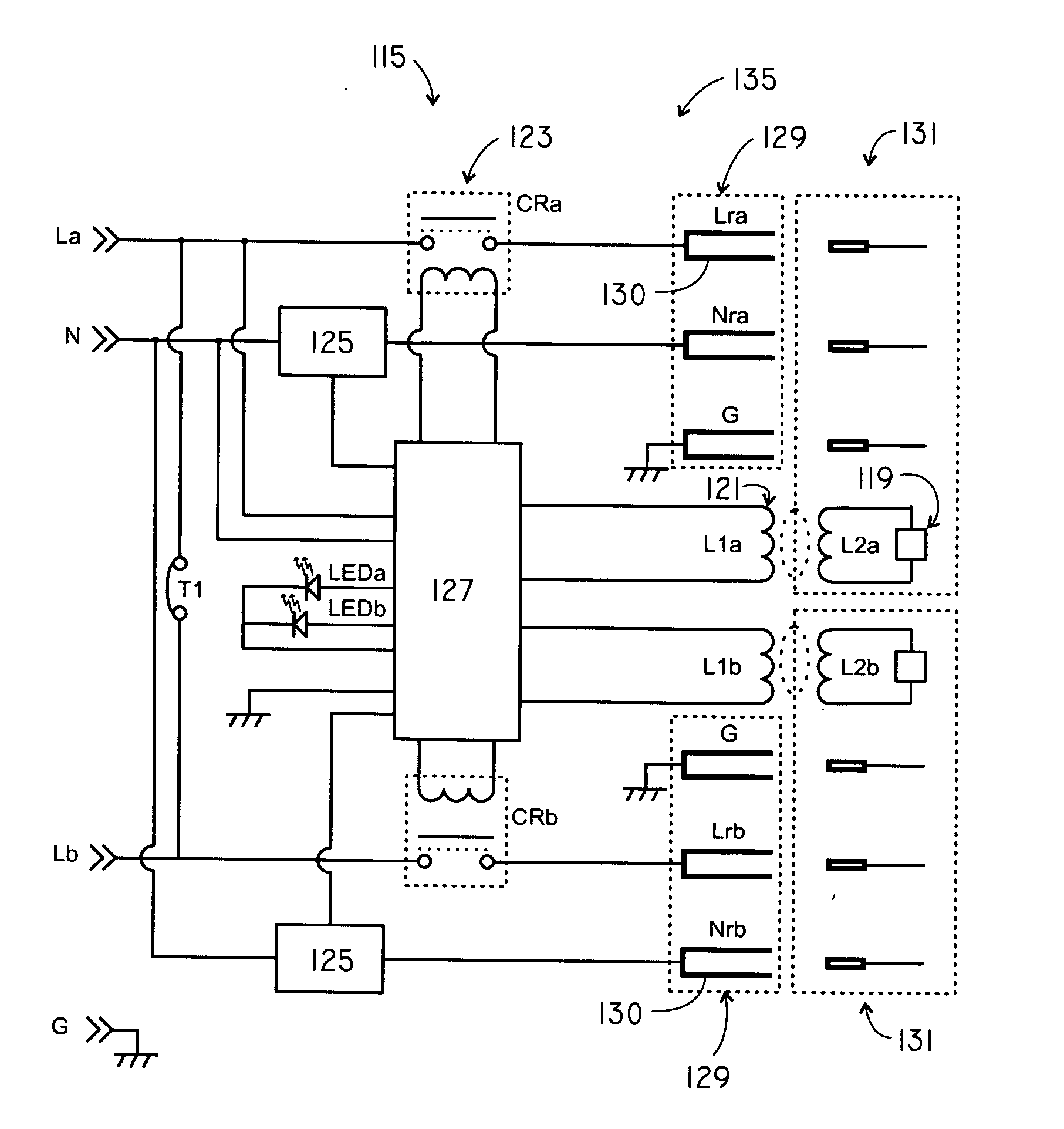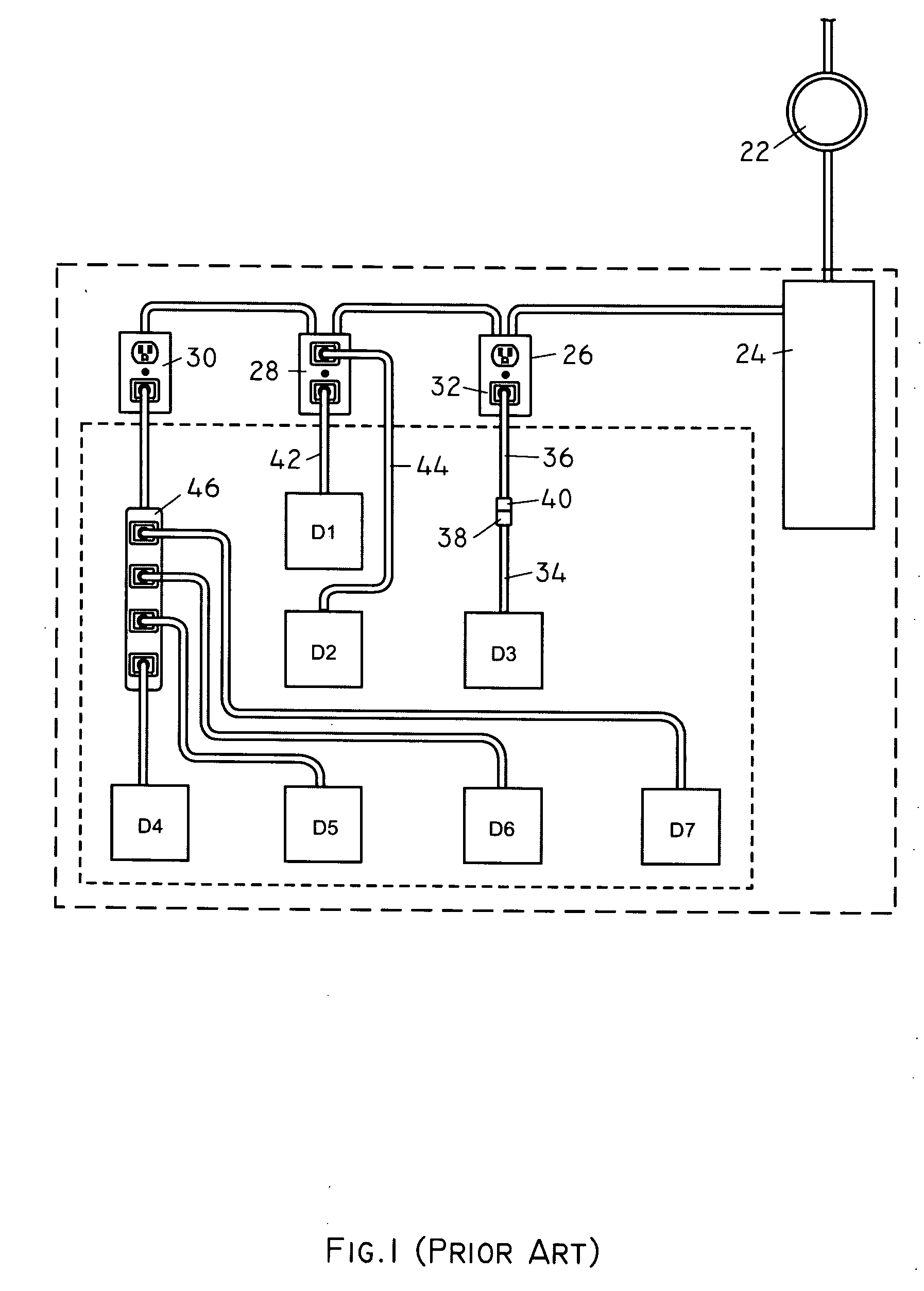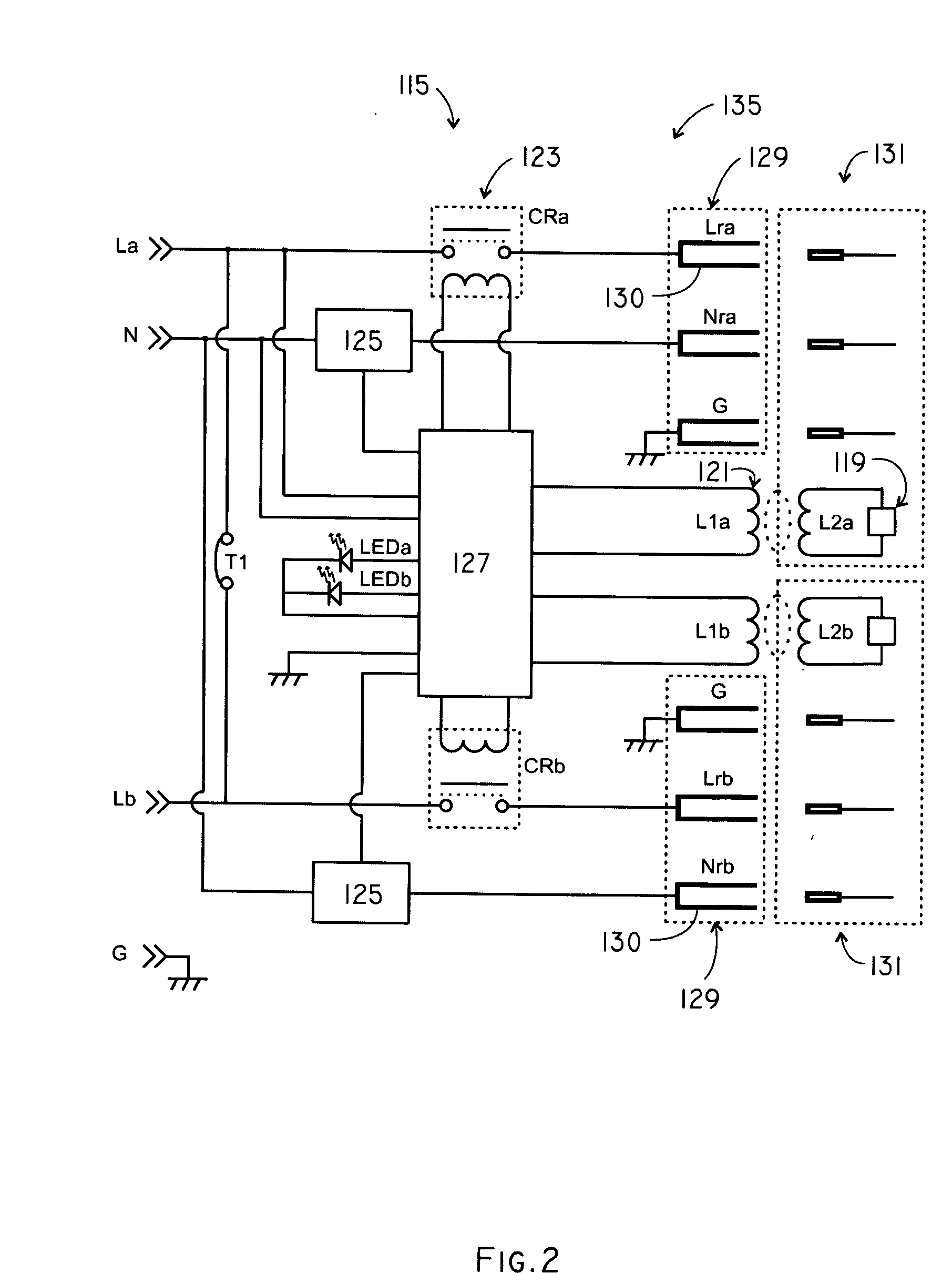Electrical power distribution system
a technology of electric power distribution system and power distribution circuit, which is applied in the integration of power network operation system, coupling device connection, instruments, etc., can solve the problems of product life cycle fatigue, smaller wires are not adequately protected by branch circuit breakers or fuse protection, and overload of smaller diameter wires in extension cords,
- Summary
- Abstract
- Description
- Claims
- Application Information
AI Technical Summary
Problems solved by technology
Method used
Image
Examples
Embodiment Construction
)
[0094] The present invention may be understood more readily by reference to the following detailed description of the invention and the examples provided herein. It is to be understood that the aspects described below are not limited to specific circuits, outlets, receptacles, plugs, or devices, and as such may, of course, vary. It is also to be understood that the terminology used herein is for the purpose of describing particular aspects only and is not intended to be limiting.
[0095] In this specification and in the claims that follow, reference will be made to a number of terms that shall be defined to have the following meanings.
[0096] Articles: As used in the specification and the appended claims, the singular forms “a”, “an” and “the” include plural references unless the context clearly dictates otherwise.
[0097] About: Often, ranges are expressed herein as from “about” one particular value, and / or to “about” another particular value. When such a range is expressed, another...
PUM
 Login to View More
Login to View More Abstract
Description
Claims
Application Information
 Login to View More
Login to View More - R&D
- Intellectual Property
- Life Sciences
- Materials
- Tech Scout
- Unparalleled Data Quality
- Higher Quality Content
- 60% Fewer Hallucinations
Browse by: Latest US Patents, China's latest patents, Technical Efficacy Thesaurus, Application Domain, Technology Topic, Popular Technical Reports.
© 2025 PatSnap. All rights reserved.Legal|Privacy policy|Modern Slavery Act Transparency Statement|Sitemap|About US| Contact US: help@patsnap.com



